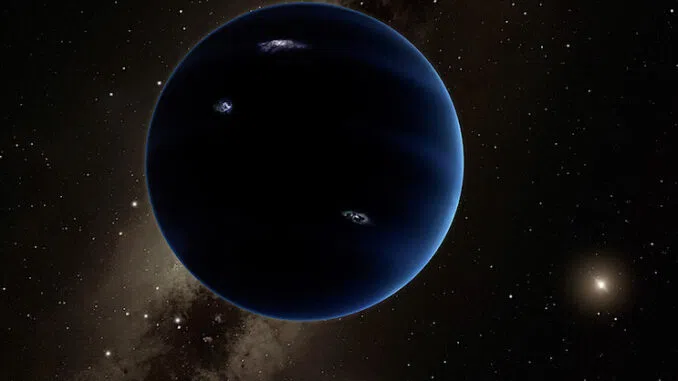

Well, folks, we've uncovered the cosmic scoop of the millennium! Who needs to go to Area 51 when the real alien hideout might be in our own Solar System all along? Perhaps Planet Nine is where all those missing socks from our laundry have been disappearing! So, while we wait for our new celestial neighbor to send us a cosmic postcard, let's keep our telescopes aimed high and our expectations even higher. More on this below, keep reading.
In recent groundbreaking research, scientists have unveiled compelling evidence of a previously undiscovered Earth-like planet mysteriously emerging within our Solar System. This celestial revelation, potentially the elusive 'Planet Nine' long theorized to exist in the remote fringes of our cosmic neighborhood, has sent shockwaves through the scientific community.
Unlocking the Mystery of Planet Nine
For years, the concept of an enigmatic ninth planet lurking beyond the Kuiper Belt has tantalized astronomers and stargazers alike. The Kuiper Belt, a distant realm of asteroids, space debris, and comets orbiting the Sun in the outer reaches of our Solar System, has been the focus of intense speculation.
Recent findings, detailed in The Astronomical Journal, present compelling evidence that certain Kuiper Belt objects exhibit peculiar behaviors indicative of the gravitational influence of an unseen planetary body. The most notable of these objects lies approximately 500 astronomical units (AU) from the Sun, with 1 AU being the Earth-Sun distance.
Odd Orbits and Cosmic Intrigue
Comparatively, Neptune, one of the Solar System's known planets, is positioned at a mere 30 AUs from the Sun. The irregular orbits observed among these Kuiper Belt objects suggest the presence of a massive celestial entity exerting its gravitational pull, far beyond the reach of typical celestial influencers.
The data-backed revelations from computer simulations conducted by esteemed scientists overwhelmingly support the hypothesis of an Earth-like planet concealed within the Kuiper Belt. In their study, researchers articulated, "We predict the existence of an Earth-like planet." They further postulated that the Kuiper Belt might host these primordial planetary remnants, akin to many such bodies present during the Solar System's early formation.
The Characteristics of a Hidden Celestial Neighbor
Should this hypothetical celestial neighbor truly exist, scientists envision it as possessing a mass approximately 1.5 to 3 times that of Earth, along with an orbital inclination of roughly 30 degrees. The theorized planet's orbit is expected to be situated within the 250 to 500 AU range from the Sun, marking it as a distant but captivating discovery.
Unlocking the Secrets of Planet Formation
The revelation of this potential Kuiper Belt planet represents a monumental stride in our understanding of planetary formation and evolution. By unraveling the mysteries surrounding this hidden world, scientists anticipate shedding light on the intricate processes governing the creation of planets within our Solar System.
In summary, the emerging evidence from the Kuiper Belt strongly supports the existence of an as-yet-undiscovered planet in the far reaches of our Solar System. As the scientific community eagerly awaits further research and confirmation, this newfound celestial neighbor holds the promise of reshaping our understanding of the cosmos and our place within it.
In the cold, unforgiving corridors of European power, the future of Ukraine is being carved…
In the eerie stillness of a gray Moscow morning, death came cloaked in fire and…
The air is thick with tension, and behind the polished smiles of politicians lies a…
In classic Trump fashion, big promises are back on the menu—this time, it’s peace in…
As millions lit candles and whispered prayers for peace this Easter, a storm of violence…
It turns out Americans are a bit torn when it comes to how they feel…